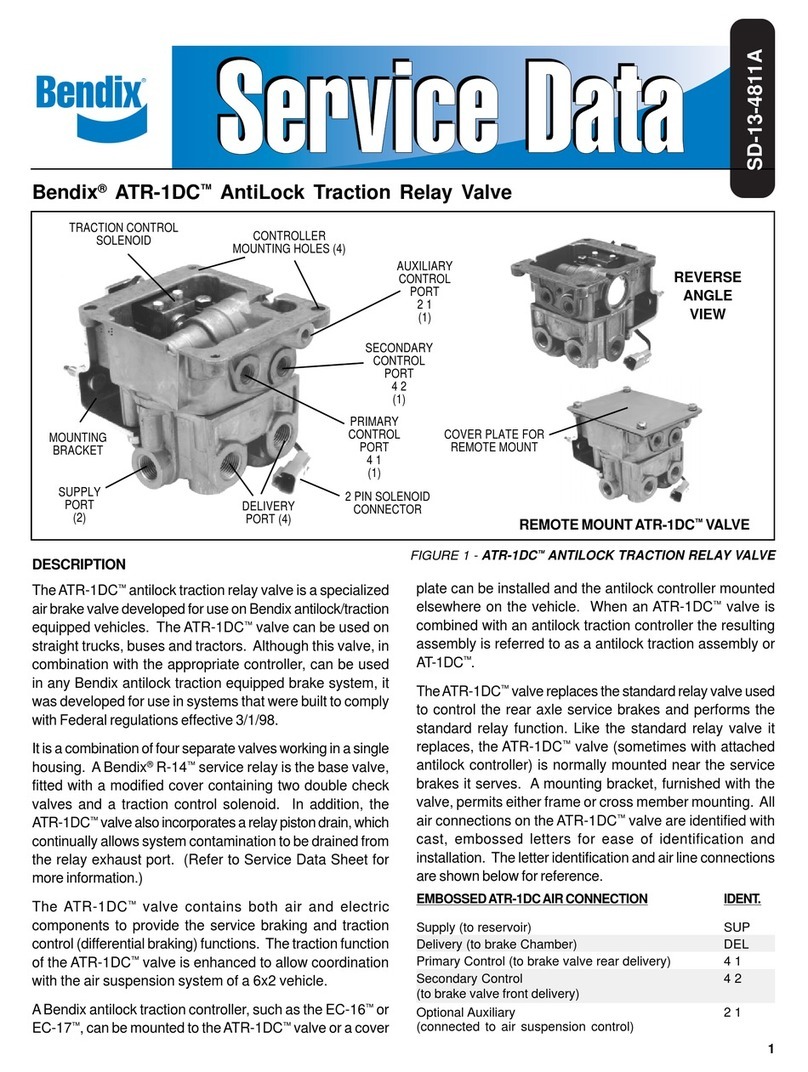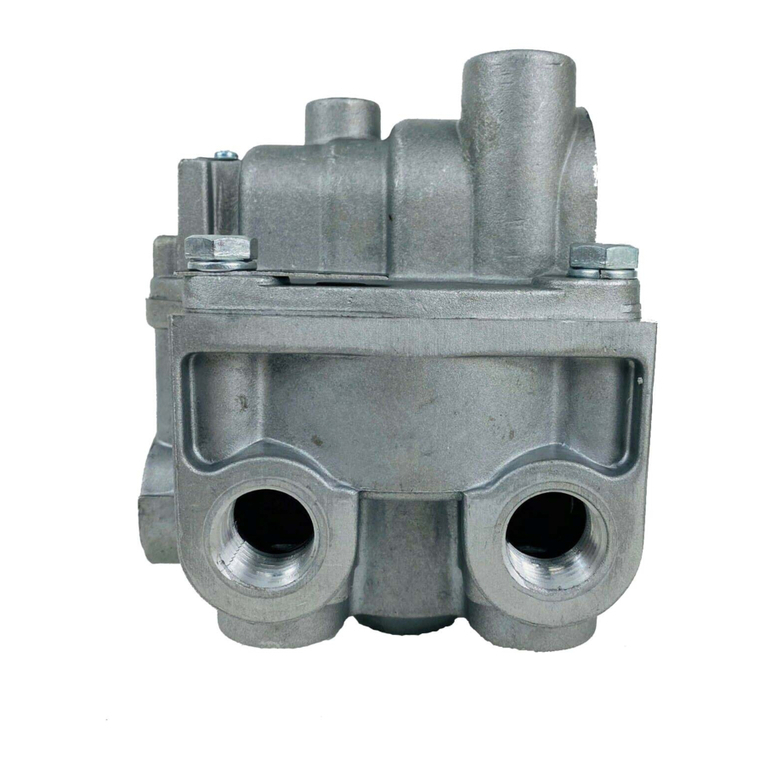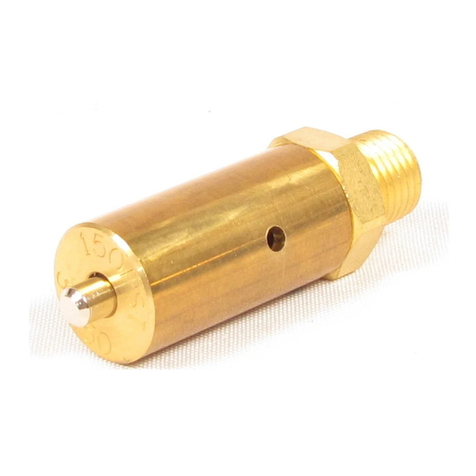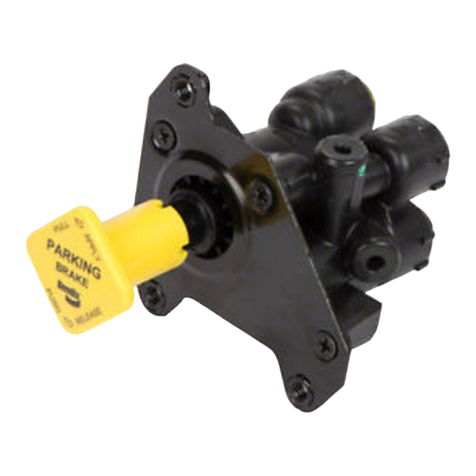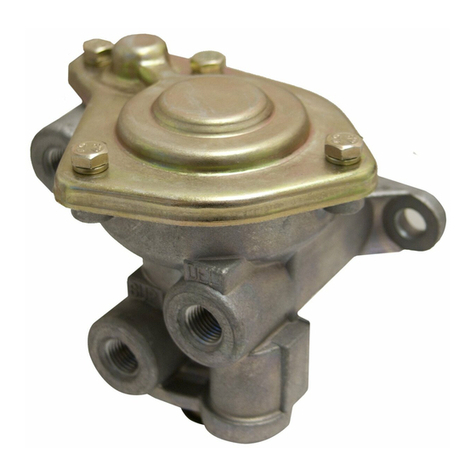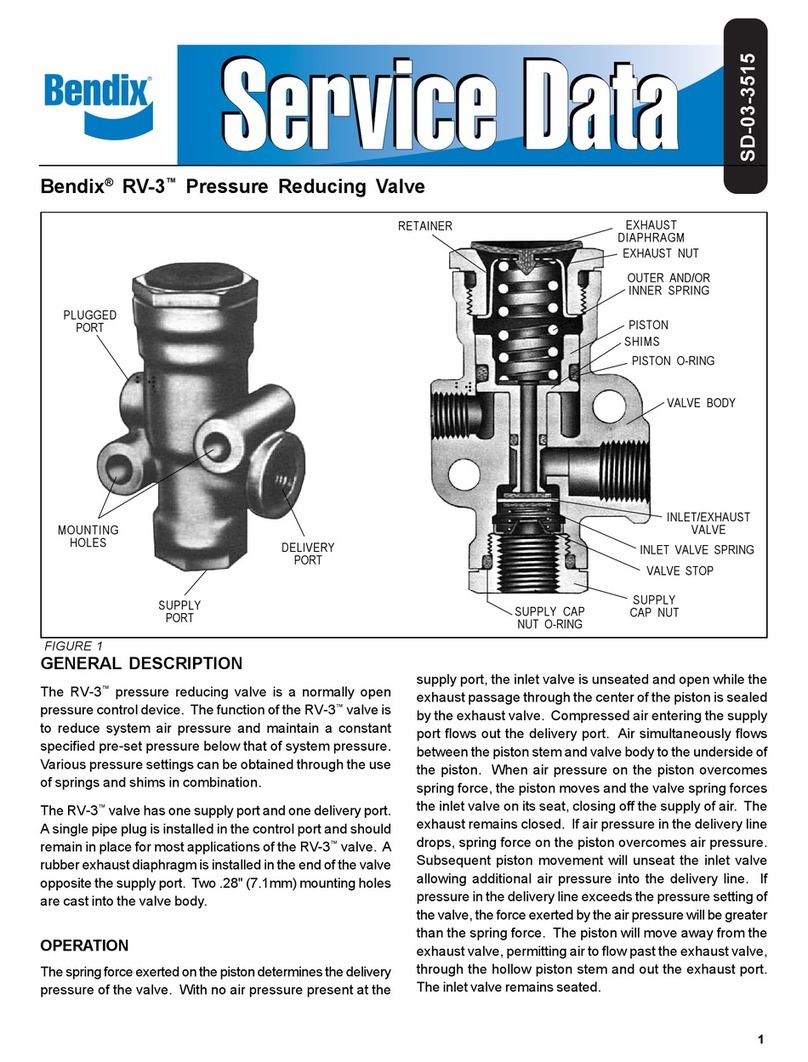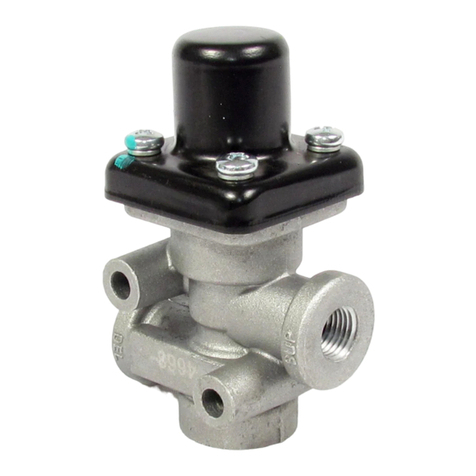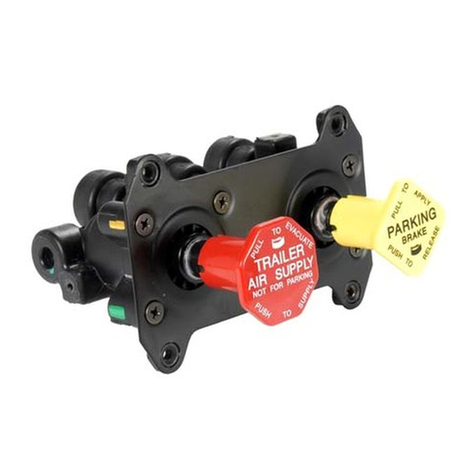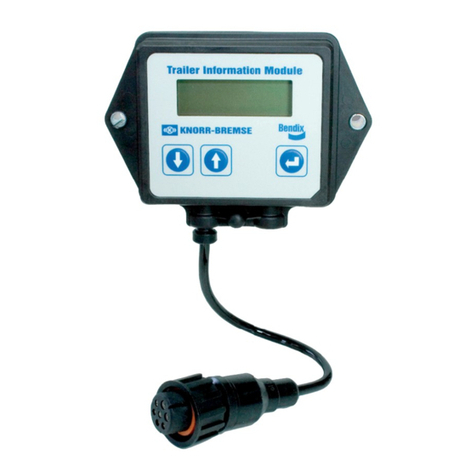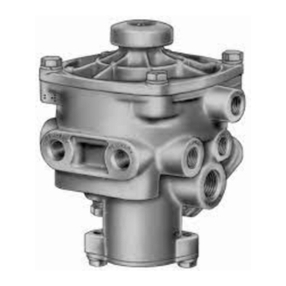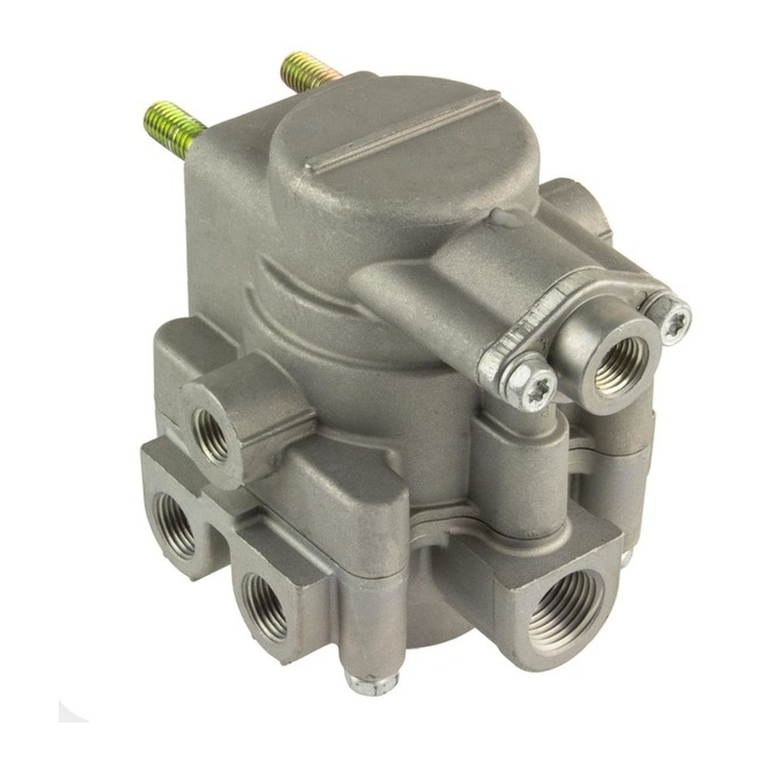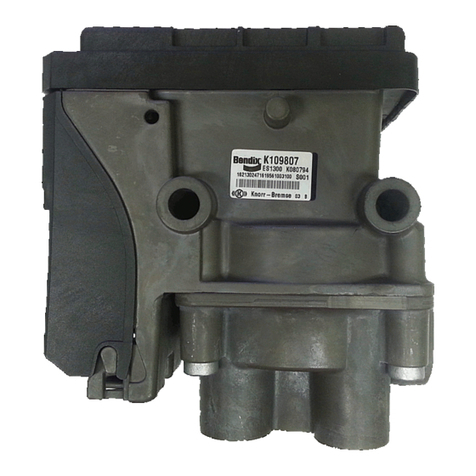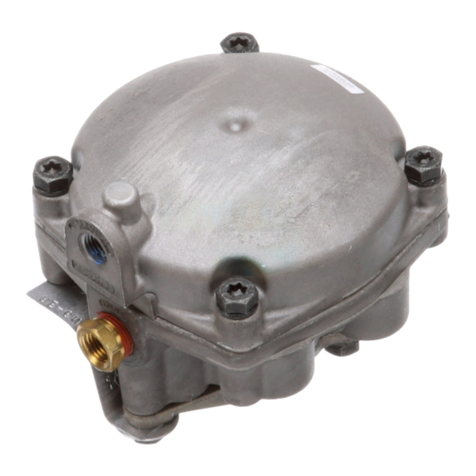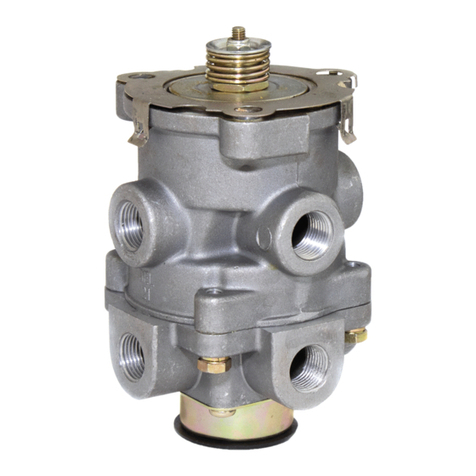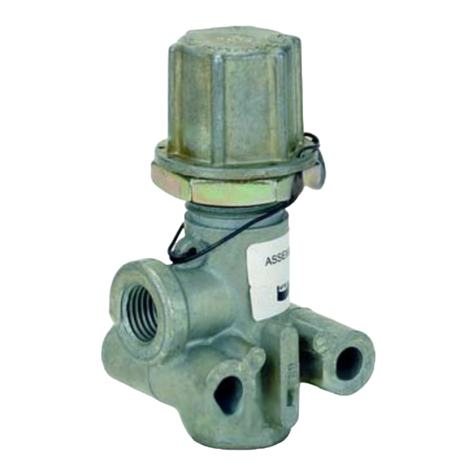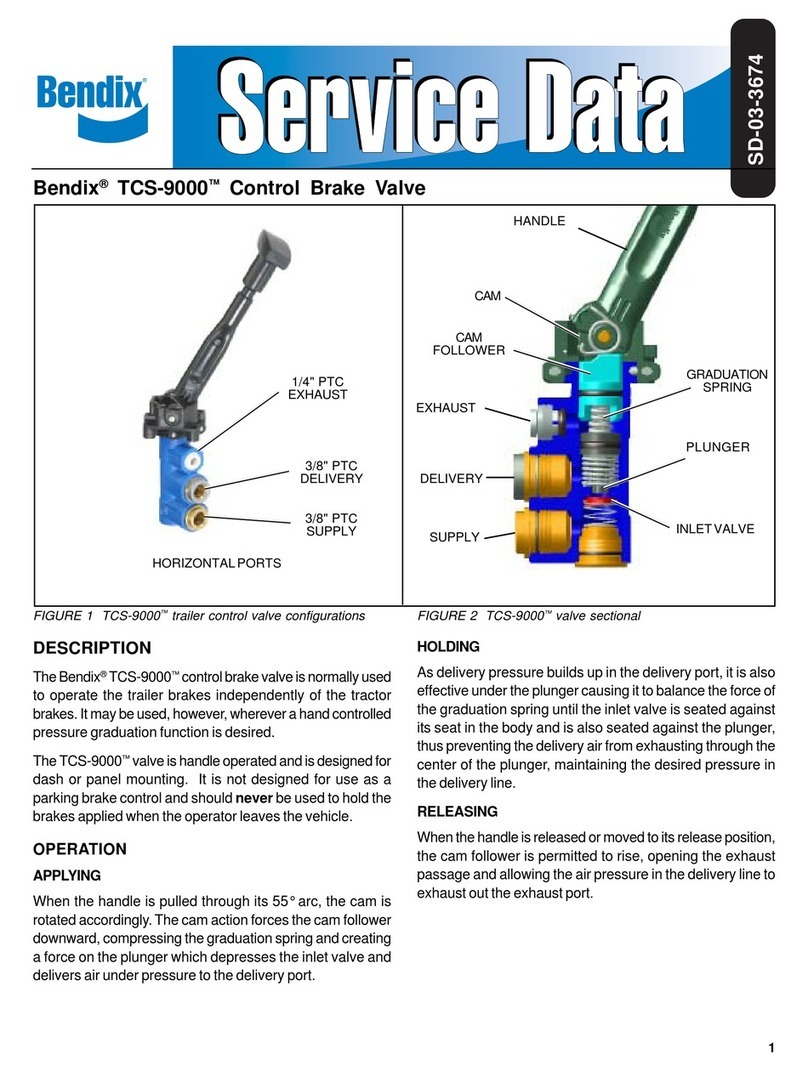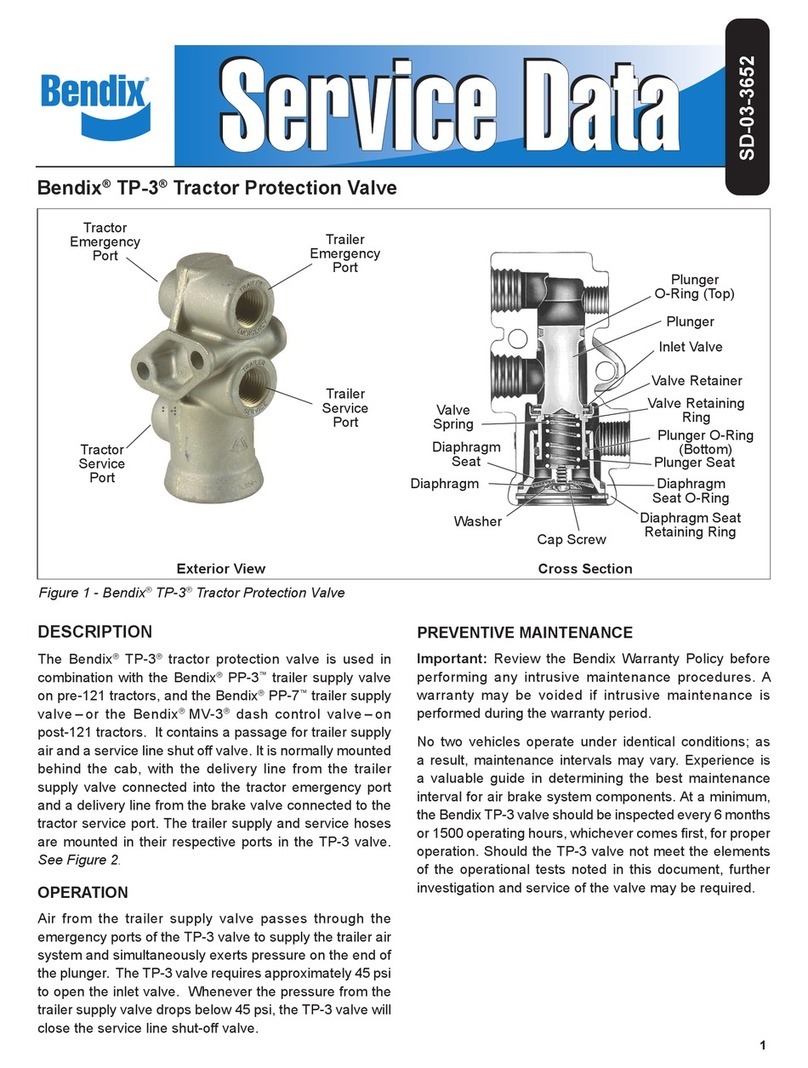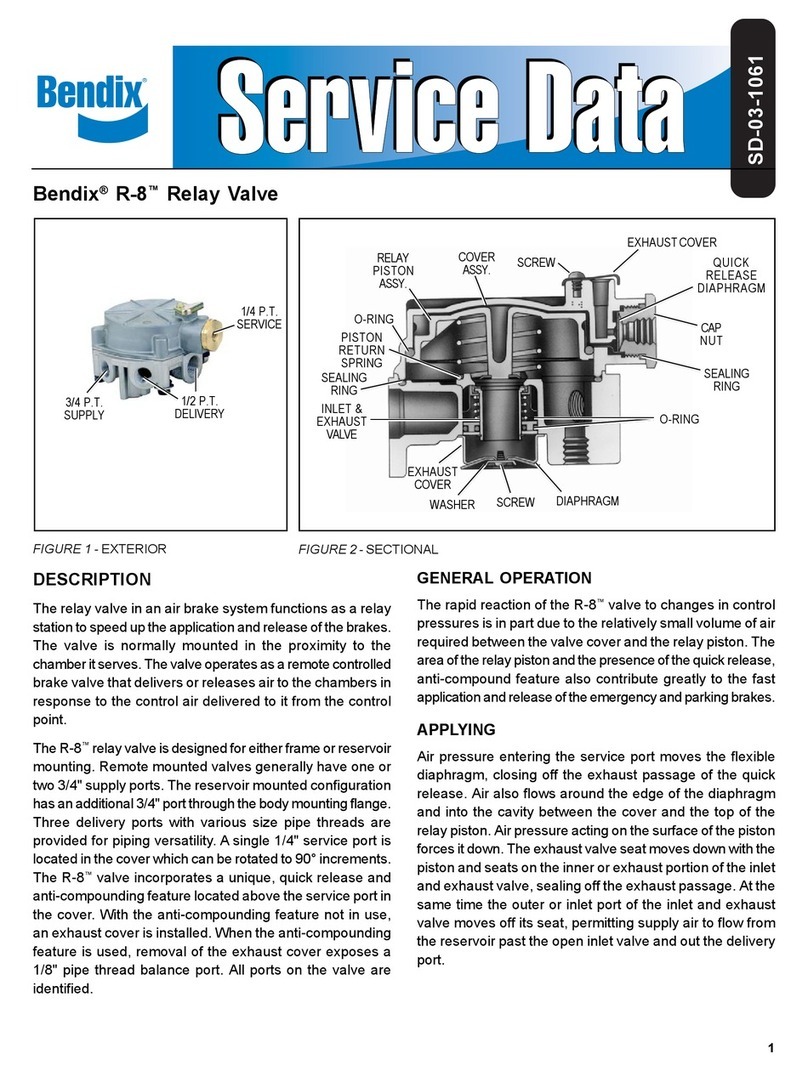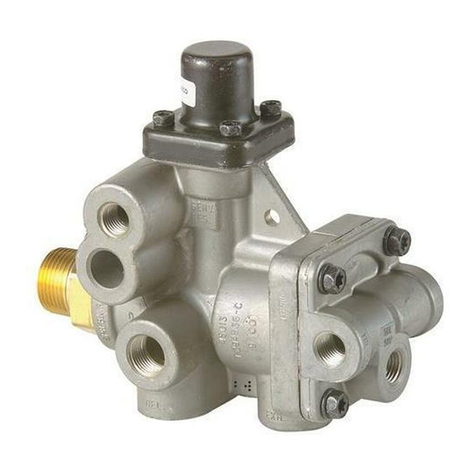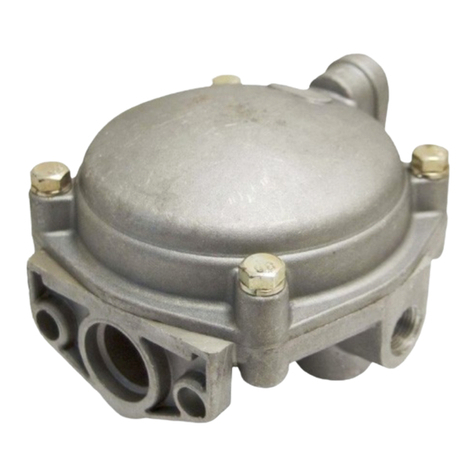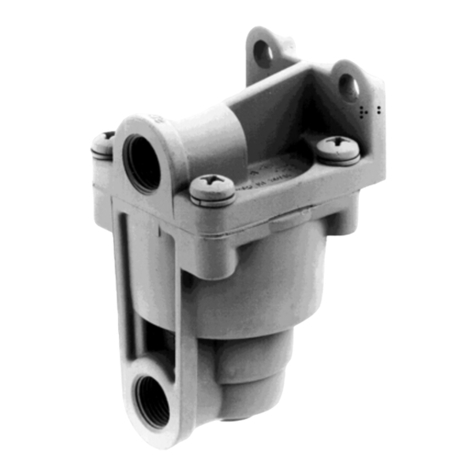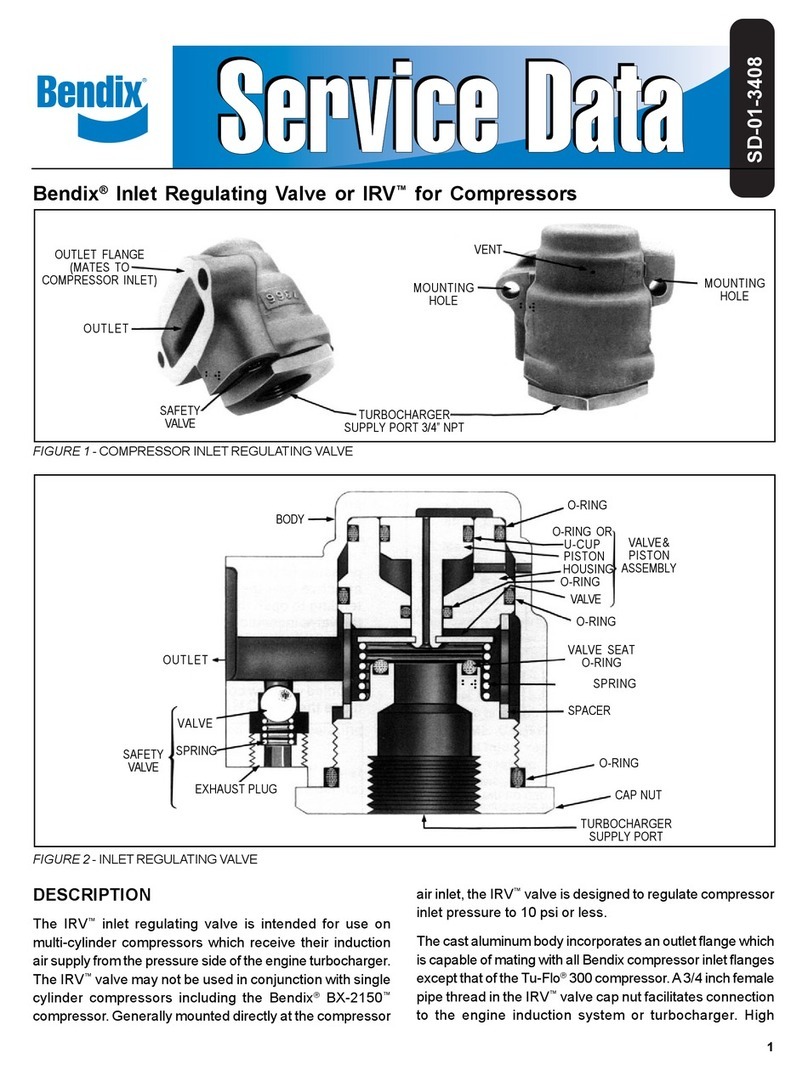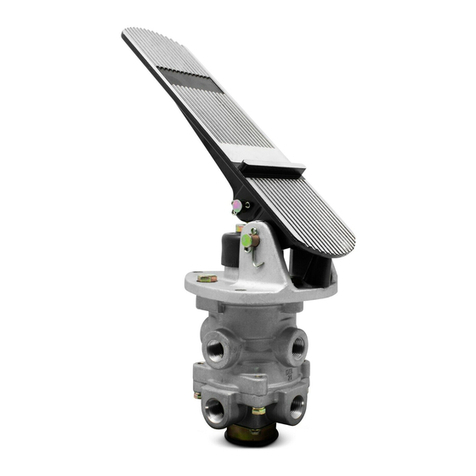
3
9. With soap solution:
A. Coat emergency line coupling. Leakage of a 1"
bubble in 5 seconds is permissible (100 SCCM).
B. Coatservicelinecoupling.Make andholdafullhand
orfootvalveapplication.Leakageofa1"bubblein5
secondsis permissible(100 SCCM).
10. Connect thecoupling andtest gaugeto theemergency
line hose coupling. Place the tractor protection control
valveto“Normal”position.(Ifnecessary,re-startengine
and build system pressure.) With ignition switch “on”
slowlydrain tractor air brakesystem observing that low
pressureindicatoroccursatprescribedpressure(normally
at approximately 60 psi) observe that the emergency
Iinewillbeventedbythetractorprotectionvalvebetween
45 to 33 psi (test gauge will drop to 0 psi.)
IftheTP-2™tractor protection valve does not function as
describedorifleakage is excessive, itisrecommended
thatitbereplacedwithanew or remanufactured unit, or
repairedwithgenuine Bendix parts, availableatBendix
outlets.
REMOVINGAND INSTALLING
REMOVING
1. Block and/or hold vehicle by a means other than air
breaks. Drain air system reservoirs.
2. Identify lines and hoses so that correct lines are
reconnected to proper ports when reinstalling.
3. Remove lines;removevalve.
INSTALLING
1. Mount valve, checking to make certain control cap is
properlypositioned.If it is necessarytore-position cap,
refer to No. 3 of “Assembly Instructions.”
2. Connect lines making certain proper lines are
connected to correct ports.
DISASSEMBLY
Important: Mark position of control port and tractor
emergencyport locationinrelationto bodyinsuchamanner
that mark will not be obliterated during cleaning of parts.
Three(3) springs invalve should be carefullymarked as to
theirproperlocationin valve as valve isdisassembled.
1. Removefour(4)cap screws (1) Figure 1,lockwashers,
and cover (2) from valve.
2. Remove emergency valve (3) and emergency valve
spring (4) from cover.
3. Remove valve seat (5) service and exhaust valve (6),
valve retainer (7), spring (8).
4. Removeo-rings(9),(10),and(11).
5. Removecapnut (12) andcontrolcap. (13).
6. Removeexhaustvalveplungeranddiaphragmassembly
from body. (14).
7. Removeexhaustplungerspring(15)frombody.
8. Inspect bores in valve body to be sure they are not
damaged or out of round. Clean body, control cap and
cover.
CLEANING AND INSPECTION
1. Clean all metal parts in mineral spirits and dry them
completely.
2. Inspect all parts for excessive wear or deterioration.
Inspect valve seats for nicks or burrs. Check the valve
springfor cracks orcorrosion.
3. Inspectthebores of the valve housingfordeep scuffing
orgouges.
Replace all parts that were discarded and any parts not
foundtobeserviceableduringinspection,usingonlygenuine
Bendixreplacementparts.
ASSEMBLY
Before assembling the TP-2™valve, lubricate all o-rings,
o-ringgrooves,bodyboresandrubbingsurfaceswithBendix
siliconelubricant(Pc. No. 291126) or equivalent.
NOTE: When using pipe thread sealant during assembly
and installation, take particular care to prevent the
sealant from entering the valve itself. Apply the
sealantbeginningwiththesecondthreadbackfrom
theend.
1. Place in vise with control cap end up. Install o-ring (16)
in groove in the stem of the exhaust valve plunger and
diaphragmassembly(14).
2. Install exhaust plunger spring (15) in valve body and
installexhaust plunger and diaphragmassembly(14).
IMPORTANT: Both sides of diaphragm and clamping
surfaces of body and control cap must be
free of grease. Plunger should be a neat
sliding fit in bore.
3. Positioncontrolcap(13)andcapnut(12).Positioncontrol
cap to desired port angle (as marked during
disassembly). Install a short (4-6") 1/4" pipe nipple in
controlport of cap. Applypressurefirmlyoncap,holding
in position with pipe nipple and firmly tighten cap nut to
approximately50 ft. lbs.
It is important that the cap not be allowed to turn while
tighteningthecapnut. Remove pipe nipple from control
port.
4. Place valve in vise with control cap down.
5. Installo-ring(10)in valve body (smalleroftwoo-rings).
